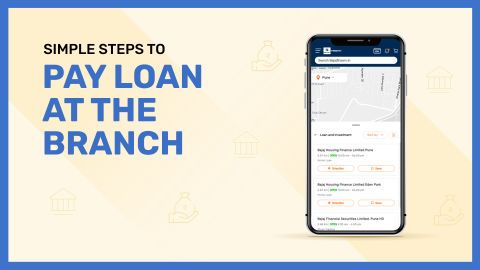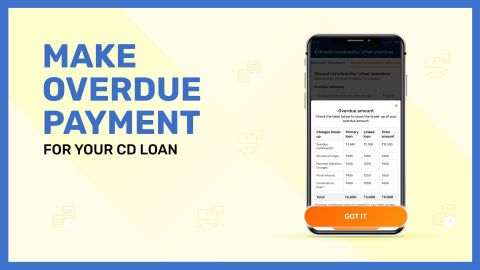Transferring a car loan can be a crucial decision for both buyers and sellers, allowing for a seamless transition of financial responsibilities. Whether you are selling your vehicle or taking over someone else's loan, understanding the process is essential to avoid complications. A car loan transfer lets the new owner take on the remaining loan payments while also updating the legal ownership of the vehicle. This process is beneficial for individuals who may no longer be able to afford their current loan or for those looking to upgrade to a different car without closing an existing loan. However, the transfer involves various legal and financial considerations, including lender approvals, credit evaluations, and paperwork completion. By ensuring a smooth transfer, both parties can benefit from a hassle-free experience while maintaining compliance with financial regulations. Read on to understand why transferring car loan ownership online is a convenient option and how you can qualify for the process.
Why transfer car loan ownership online?
With digital advancements, transferring car loan ownership online has become a preferred choice for many due to its convenience and efficiency. Online platforms provide a streamlined process, reducing the need for physical visits and extensive paperwork. Here are the reasons why you should consider transferring car loan ownership online:
Time-saving and hassle-free process: Online platforms allow you to complete the transfer procedure from the comfort of your home, eliminating the need for multiple visits to the bank or financial institutions.
Secure and transparent transactions: The digital process ensures transparency, with all required documents and approvals being processed securely.
Faster approval process: Since online applications are processed in real time, the approval and verification process is quicker compared to traditional methods.
Minimal documentation: Many banks and financial institutions have simplified the process by reducing paperwork requirements, making it easier for both the seller and the buyer.
24/7 Accessibility: Unlike physical branches that operate within fixed hours, online platforms are accessible at any time, allowing users to initiate and track their transfer requests conveniently.
Instant status updates: Applicants receive real-time notifications on their transfer status, making it easier to stay informed throughout the process.
Environmentally friendly: Going paperless reduces the environmental impact, contributing to sustainability efforts.
Multiple lender options: Online platforms allow you to compare different lenders and choose the best option that suits your financial needs.
Error-free submissions: With digital validation checks, online processes minimize the risk of errors, ensuring smooth approval.
Legally compliant and secure: Online car loan transfers follow strict regulations, ensuring compliance with all legal requirements.
Eligibility criteria for transferring car loan ownership
When transferring a car loan, specific eligibility criteria must be met by both the current loan holder and the new buyer. Below are the essential requirements to qualify for the transfer:
Lender approval: The car loan provider must approve the transfer request after verifying the financial standing of the new borrower.
Credit score of the buyer: The new owner should have a good credit score to qualify for the loan transfer.
Existing loan status: The current loan should not have pending overdue payments or defaults.
Valid loan agreement: The car loan agreement should allow for ownership transfers as per the lender’s policies.
New buyer’s income proof: The buyer must provide proof of stable income to ensure repayment capability.
Employment status: Lenders may require the new buyer to be a salaried employee or self-employed with stable earnings.
Age criteria: The buyer should be within the age limit defined by the lender, typically between 21 and 65 years.
Valid identification documents: Both parties must submit KYC documents, including Aadhaar, PAN card, and address proof.
Vehicle Registration Certificate Update: The vehicle’s RC must be transferred to the new owner's name.
Insurance policy transfer: The car insurance should also be transferred to the new owner's name to ensure continued coverage.
Loan repayment tenure compliance: The new owner should be willing to comply with the remaining loan tenure and EMI structure.
Processing fees payment: Some lenders charge a nominal fee for processing the ownership transfer request.
Guarantor requirement (if any): If the lender mandates a guarantor, the new buyer must provide details for approval.
Bank account verification: The new owner must have a verified bank account for auto-debiting EMI payments.
No ongoing legal disputes: The car should not be involved in any legal disputes or pending cases that could hinder the transfer.
Approval from RTO: The Regional Transport Office (RTO) must approve the ownership transfer and update records.
Physical inspection of the car: Some lenders may require a physical vehicle inspection before approving the loan transfer.
Consent from both parties: Both the seller and the buyer must agree to the terms and conditions outlined by the lender.
Meeting these eligibility criteria ensures a smooth and successful transfer of car loan ownership, allowing both parties to benefit without financial or legal complications.
Step-by-step guide: How to transfer car loan ownership online?
Visit your lender’s official website and navigate to the car loan transfer section.
Fill out the online application form with the required details.
Upload necessary documents, including ID proofs, income proof, and vehicle details.
Submit the application for review and verification by the lender.
The lender will assess the creditworthiness of the new owner.
Both parties must agree to the revised loan terms, if applicable.
Pay any applicable processing fees online.
The lender will process the request and provide approval upon successful verification.
Update the vehicle’s registration certificate with the new owner’s name at the RTO.
Transfer the car insurance policy to ensure continued coverage.
Once all formalities are completed, the car loan ownership transfer is finalized.
Documents required for car loan ownership transfer
Original car loan agreement
Identity proof of both parties (Aadhaar, PAN card, passport)
Address proof (utility bills, voter ID, rental agreement)
Income proof of the new owner (salary slips, bank statements, tax returns)
Vehicle registration certificate (RC) with updated ownership details
No Objection Certificate (NOC) from the lender
Car insurance policy transfer documents
Post-dated cheques or ECS mandate for EMI payments
Signed loan transfer agreement
Processing fee payment receipt
Consent letter from both parties
Key benefits of transferring car loan ownership online
Eliminates the need for physical visits, saving time and effort.
Provides a secure and transparent process.
Reduces paperwork and simplifies the documentation process.
Allows faster approval and loan processing.
Ensures seamless ownership and liability transfer.
Offers 24/7 accessibility for tracking and status updates.
Helps in maintaining a good credit score for both parties.
Facilitates error-free submission with digital validation checks.
Reduces processing fees in comparison to offline methods.
For more financial insights, check out foreclosure charges on car loan and check car loan balance.
Conclusion
Transferring car loan ownership online is a seamless and efficient process that benefits both the current loan holder and the new owner. By following the necessary steps, providing the required documents, and meeting eligibility criteria, individuals can ensure a hassle-free transfer. Online platforms have simplified this process, making it more accessible, secure, and transparent. Whether you are selling a car or taking over an existing loan, understanding the process helps prevent financial or legal complications. By opting for an online transfer, you can save time, reduce paperwork, and ensure a smooth transition of ownership with minimal effort.




